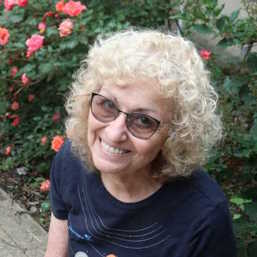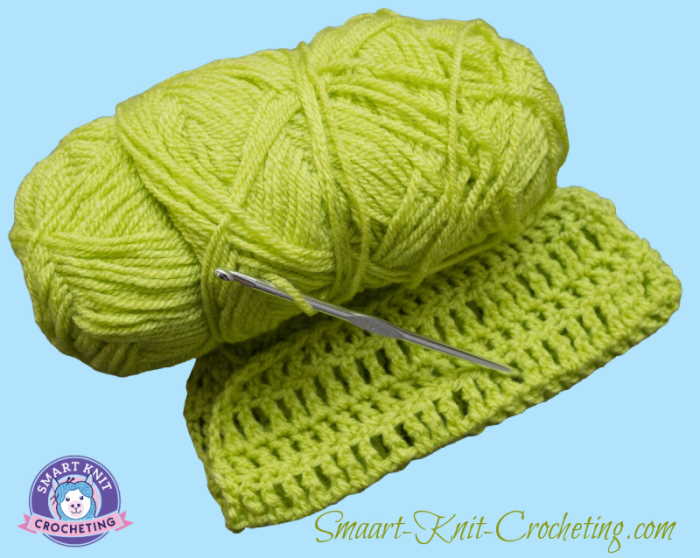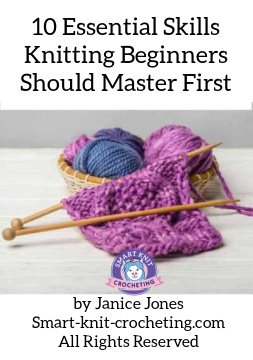- Home
- How to Knit: Basics
- Understanding Knitting Instructions
Knitting Instructions
Knitting Instructions by Janice Jones
As a knitting enthusiast, I know that understanding knitting patterns is crucial to creating beautiful and well-fitting garments.
From deciphering knitting abbreviations to reading knit instructions, there are many elements that go into understanding and following a knitting pattern. In this article, I will guide you through the process of mastering the art of understanding knitting patterns.
Introduction to Knitting Instructions
My grandmother taught me how to make the knit and purl stitches when I was a child. At the time, reading was difficult for me, and the thought of trying to read and understand knitting instructions was well above my head. So I made stuff that a kid might use or give as a gift that didn’t require written knit instructions.
As you might guess, there’s only so far you can go without a pattern and the knowledge gleamed from knitting instructions.
I will confess that I was an adult before I picked up my first pattern and tried to decipher it. By then my grandmother had passed and I needed to figure out all those abbreviations and directions. It wasn't an easy task.
What are Knitting Instructions?
Knitting patterns are a set of instructions that guide you through the process of creating a knitted item. They typically include information on the required materials, gauge, stitch pattern, and finishing techniques.
Knitting patterns come in many forms, including books, magazines, and online resources. They can range from simple patterns for beginners to complex patterns for experienced knitters.
Why Understanding Knitting Patterns is Important
Understanding knitting patterns is important because it allows you to create garments that fit well and look beautiful. Knitting patterns provide detailed instructions on the size, shape, and style of a garment.
By following these instructions, you can ensure that your finished project meets the desired specifications. Additionally, understanding knitting patterns allows you to create more complex and intricate designs, expanding your knitting skills and creativity.
Common Knitting Abbreviations and What They Mean
Knitting patterns are full of abbreviations that can be confusing to beginners. Knitters use abbreviations because writing out instructions without a shorthand method would me our patterns would go on forever. Some common knitting abbreviations include:
- K: knit
- P: purl
- CO: cast on
- BO: bind off
- RS: right side
- WS: wrong side
I have written a page completely devoted to knitting abbreviations and you can get my free pdf download to keep in your knitting bag.
To make things even more confusing, some knitting abbreviations may vary depending on the pattern or the country of origin. It's important to read the pattern carefully and refer to my knitting abbreviation chart if needed. I am in the US so all my patterns and knitting instructions use US Terms.
Reading Knit Instructions: Anatomy of a Knitting Pattern
Typically, knitting instructions are broken down into sections that include a variety of important information. Well-written patterns should have most of these instructions, but they may not be in this order:
Title of the Pattern and Name of the Designer
The designer is free to choose a title for her creation. Sometimes it is named after the person it was designed for. Other times inspiration for the name comes from the season, the type of design, the colors of the yarn, or a favorite place.
Romance
Often the designer will write a paragraph or more about her/his inspiration and a description of what you are about to make.
Skill Level
What you can expect about the difficulty to knit the project. These levels are determined by the Craft Yarn Council. I have another article where I go into more depth if you are curious.
Sizing
If you are making a garment with multiple sizes, do check measurements to assure you have chosen the correct size. Patterns should indicate the sizes available and include the measurements for each size.
Most patterns will list the smallest size on the outside of the parentheses and the other sizes within the parentheses. S (M, L, XL). Look for both English and metric sizing).
If you are unsure about sizing, find a favorite garment such as a sweater that fits you well, and measure it instead of your body measurements.
Abbreviations
These will include any that are needed for the pattern you are using, including any special abbreviations that might be needed to complete the project.
Pattern Notes
Any specifics about the pattern that may not be obvious from the directions such as, “all directions are written in UK terms.”
Materials and Supplies
Here you will find a list of supplies you will need to have including the yarn used by the designer and the size needles needed to obtain gauge.
Many times designers work for a yarn company, so their choice of yarn is dictated by their employer. Remember, you don’t need to use the exact yarn recommended by the designer but choose one that is the same weight.
For example, the pattern calls for 100% wool, but you would prefer to find a yarn that can be machine washed. If you would like some recommendations for yarn substitutions, this website is a great place to start. (yarn sub)
Stitch pattern
The stitch pattern is the repeating sequence of knit and purl stitches that make up the fabric. It's important to understand the stitch pattern before starting the project. You may not need this if the pattern is made up of a simple pattern such as a stockinette stitch.
Gauge
Gauge refers to the number of stitches and rows per inch. It's important to check your gauge before starting the project to ensure that your finished garment will fit properly.
Create a yarn swatch that is larger than a four-by-four-inch square (10cm by 10 cm) using the recommended needle size. If this does not match the pattern, you may need to go up or down a needle size. More about gauge.
Directions for Each Part of the Project
If you are making a sweater, for example each part of it will be in a different section (front, back, sleeves, neckband). You will find these instructions either written out or in the form of charts. Some patterns include both, especially if it is easier to knit from a chart such as with lace and colorwork.
Shaping
Shaping refers to the process of increasing or decreasing stitches to create a specific shape. It's important to follow the shaping instructions carefully to ensure that your finished garment fits correctly.
Sometimes these instructions are spelled out in detail for you, but otherwise, it is assumed that you know what to do. This is where a good knitting book comes in handy.
Schematics
Schematics are diagrams or drawings of the article with measurements included to help you visualize what you are making.
Designer Bio and Contact Information
Designer Bio and Contact Information should be available in case you have questions or need to get clarifications on anything in the pattern.
Understanding Different Types of Knitting Patterns - Written, Charted, and Combination
There are three main types of knitting patterns: written, charted, and combination.
- Written patterns: Written patterns provide instructions in written form, typically in paragraph or list format. They may also include abbreviations and charts.
- Charted patterns: Charted patterns provide instructions in the form of a chart or graph. Each square on the chart represents a stitch or a row.
- Combination patterns: Combination patterns provide both written and charted instructions.
It's important to choose the type of pattern that works best for you and to become familiar with each type of pattern.
Tips for Decoding Complex Knitting Patterns
Decoding complex knitting patterns can be challenging, but there are several tips that can make the process easier:
- Choose the format that is easiest for you to follow. Paper (hard copies) or digital formats are available.
- Read the pattern carefully: Take the time to read the pattern thoroughly before starting the project. Pay attention to any special instructions or techniques.
- Break it down: Break the pattern down into smaller sections or steps. This can help you focus on one part of the pattern at a time.
- If the pattern provides instructions for multiple sizes, highlight or mark in some way which size you are making.
- Keep notes handy so you don’t lose your place if you need to set the project down for any length of time.
- Ask for help: Don't be afraid to ask for help if you're struggling with a pattern. There are many online knitting communities where you can ask for advice or guidance.
Mistakes to Avoid When Working with Knitting Patterns
There are several common mistakes that knitters make when working with knitting patterns. These include:
- Skipping important instructions
- Misreading stitch patterns or charts
- Not checking the gauge
- Not following shaping instructions
- Not counting stitches
- Losing your place
Remember, we are all guilty of these mistakes so be kind to yourself. To avoid these mistakes, it's important to read the pattern carefully and to take your time when working on the project.
First, don't overlook the importance of measuring your gauge before you start your project. Nothing is more heart-renching than finishing a lovely garment only to find that it won't fit.
If it is a paper pattern you are using, feel free to mark it up using a highlighter or pencil. Highlight the size you are making, mark where you left off when finishing for the evening, and star special instructions to help you find them easily.
You can purchase large paperclips that allow you to move down the page without loosing your place, and prevent you from skipping important instructions.
Finding a well lit area to knit is important especially if you find yourself knitting well after sundown. Special craft lights are a helpful if you have vision problems and those that come with a magnifying glass are even better.
Are you following a pdf file online? Find out if you can mark it up or whether you might need to download and turn it into a paper pattern.
Finally, even the most advanced knitter knows the importance of counting stitches and then counting them again. Some simple mistakes can be avoided simply by being mindful of your stitches.
Resources for Finding Knitting Patterns and Understanding Them
There are many resources available for finding knitting
patterns and understanding them. Some of these resources include:
- Ravelry: Ravelry is an online community for knitters and crocheters. It includes a database of thousands of knitting patterns, as well as forums for discussion and support.
- Knitting magazines: Knitting magazines such as Vogue Knitting and Interweave Knits feature patterns as well as articles on knitting techniques and tips.
- Knitting books: There are many knitting books available that provide patterns and instructions on knitting techniques.
- Online tutorials: There are many online tutorials available that provide step-by-step instructions on knitting techniques and tips.
- This website: I have a ton of free tutorials and patterns, all for the taking. All are free without any strings attached. They are my gift to you. Many I wrote, but even more were here when I purchased the site. Some are in better shape than others.
Practice Exercises for Mastering Knitting Patterns
To master knitting patterns, it's important to practice. Some exercises that can help you improve your understanding of knitting patterns include:
- Knitting swatches: Knitting swatches can help you practice different stitch patterns and techniques.
- Reading patterns: Reading patterns regularly can help you become more familiar with knitting abbreviations and techniques.
- Following simple patterns: Following simple patterns can help you build confidence and improve your skills.
Conclusion
Understanding knitting patterns is essential to creating beautiful and well-fitting garments. By learning to read and decode knitting patterns, you can expand your knitting skills and creativity. Remember to take your time, read the pattern carefully, and ask for help if needed. With practice and patience, you can master the art of understanding knitting patterns and create beautiful knitted items.
So, what are you waiting for? Pick up your needles and start knitting today!
Janice
About Janice
Hi, I’m Janice, the voice behind Smart-Knit-Crocheting. I love to knit and crochet and even more, I love teaching others what I know.
Though I learned to knit and crochet as a child, I didn’t get serious about these amazing hobbies until I retired. I’m a certified knit and crochet instructor through the Craft Yarn Council and am working on becoming a Master Hand Knitter through The Knitting Guild Association.
I’m currently living with my husband of over 50 years and our 6 Shih Tzu dogs.
I love hearing from you, so please drop me a line and let me know what you’re working on, whether you love knitting or crocheting more, and if you have any questions. Please visit my about me page for more information.
Happy Crocheting






